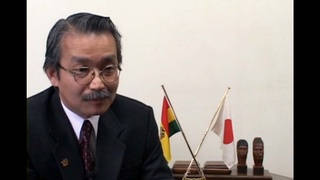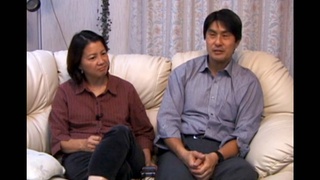Interviews
Disadvantages of looking Japanese
All the verbal etiquette, the mannerisms in Japan, which is a lot compared to different countries—I had no idea what they were. I didn’t know I shouldn’t drink before the elders. You know, we sit down with some company president, and we get our drinks. He doesn’t get his drink yet, and I’m sipping mine. I didn’t know I couldn’t do that. Before you eat, “itadaki-masu.” After you eat, “Gochisou-sama.” I didn’t know those words.
The problem with that was me looking Japanese. I was expected to know all that. If I had blue eyes, blond hair, and I didn’t do that, “This foreigner, this gaijin doesn’t know the mannerisms here.” Because I looked so Japanese, I was portrayed as a rude Japanese, in a way, for the people who didn’t know who I was.
You see me at a restaurant with a president that really doesn’t know me that much. I’m sitting with the president of the English school, just coming with him. So I’m not really introduced like that. And I’m there just sitting down drinking my juice, and he doesn’t even have his. It’s not a good impression. So I had lot of problems with that—everyone thinking that I knew the language, everyone thinking that I should speak.
I got stopped once on the rode with police, and he asked me for my license in Japanese, which I didn’t understand that time because I just came [here]. I looked and said, “I don’t know what you’re talking about.” I’m giving him the registration, which usually people ask first the registration. And he’s asking for my license. And you know, I told him in my broken Japanese that “I don’t understand what you’re saying. I’m not Japanese.” And he got pissed at me, and it got really bad that situation. You know, he actually had to apologize later because I was a foreigner. I really didn’t understand what he was saying.
So there’s a lot of prejudice in Japan to foreigners. And lo and behold, I was considered a foreigner when I got here.
Date: October 14, 2003
Location: Saitama, Japan
Interviewer: Art Nomura
Contributed by: Art Nomura, Finding Home.
Explore More Videos

Grandmother's influence on decision to go to Japan
(b.1942) Japanese American ceramist, who has lived in Japan for over 30 years.

A Possible Path towards Happiness… (Spanish)
(1958-2014) Former Bolivian Ambassador to Japan

What is Nikkei? (Japanese)
Tsuda College President, researcher of Nikkei history

Learning from Nikkei (Japanese)
Tsuda College President, researcher of Nikkei history

Nickname
(1926 - 2012) Scholar and professor of anthropology. Leader in the establishment of ethnic studies as an academic discipline

Context affects meaning
(1926 - 2012) Scholar and professor of anthropology. Leader in the establishment of ethnic studies as an academic discipline

Testing assumptions of Japanese scholars
(1926 - 2012) Scholar and professor of anthropology. Leader in the establishment of ethnic studies as an academic discipline




Feeling empowered by taiko
Co-founder and creative director of San Jose Taiko

Sense of lineage between Sansei and Issei through Taiko
Co-founder and creative director of San Jose Taiko

Image of Americans
Sansei from Hawaii living in Japan. Teacher and businesswoman.

Japanese influence growing up
(b.1942) Japanese American ceramist, who has lived in Japan for over 30 years.

Diverse membership in San Jose Taiko
Co-founder and creative director of San Jose Taiko
